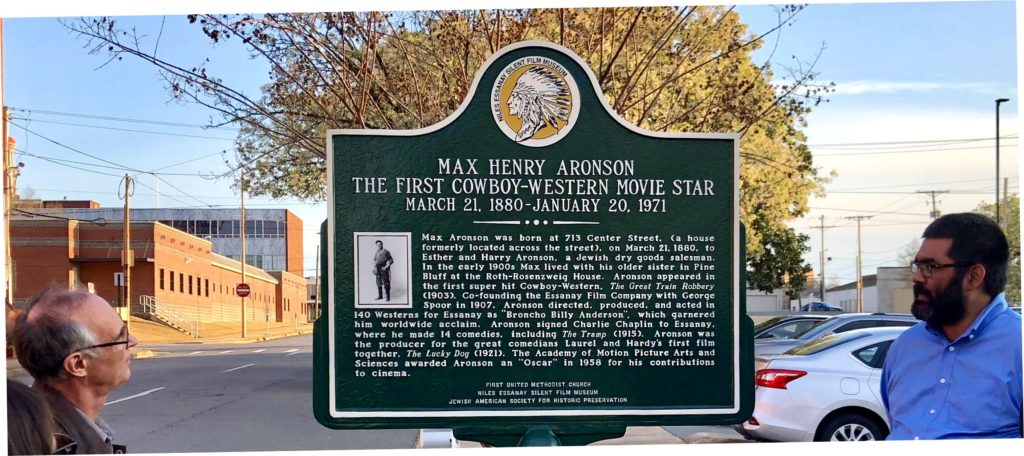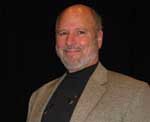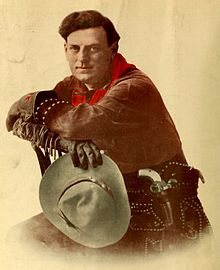
By Jerry Klinger


LITTLE ROCK, Arkansas — Max Henry Aronson was born March 21, 1880 at 813 Center Street, in Little Rock, Arkansas. He was known as Max, sometimes, Gilbert, and not so often Henry, for a little more than twenty years of his life. Until he died in 1971, at 91, he was Bronco Billy Anderson, the first Cowboy Hero of the Silent Movie Silver Screen. Three months before Bronco Billy, that is Max, was born, Douglas MacArthur was born, Jan 26, 1880, down the street in the Tower Building of the Little Rock Arsenal.
Two years ago, I received an unlikely email from Mahendra Prasad about Max Henry Aronson.
Hi. I am the founder and admin of The Silent Film Group on Facebook, which has over 18,000 members. One of my hobbies is finding unmarked historical sites. Max Aronson, more famously known as Broncho Billy Anderson, is commonly recognized as the first cowboy movie star…He is the also an important producer in film history, as co-owner of Essanay Studios, which produced about a dozen of Charlie Chaplin’s early films. Additionally, he was the first producer to put Laurel and Hardy together in the same film. He won an honorary Oscar in 1958 for his contributions to the development of motion pictures as entertainment. Max Aronson was born in Little Rock, AR…I’m pretty sure we now know where his birthplace was located. As a silent film buff, I would love to have a historical marker erected at his birthplace. He was a pioneer of the western film genre, and he boldly defied negative stereotypes of Jews. I have talked with people involved with the annual Broncho Billy Film Festival and the Essanay Silent Film Museum and the Little Rock Film Festival, and they were … pretty excited by the idea.
A first generation Hindu American had contacted me, a first generation Jewish American. Mahendra wanted to tell the story of another first generation Jewish American who created and became the first international Cowboy Super Hero of the Silver Screen.
Until Mahendra had written to me, I had never heard of Bronco Billy Anderson.
Like most kids growing up in the early days of T.V. Westerns, nurtured on Rawhide, Gun Smoke, Bonanza, the Rifleman, Paladin, Have Gun Will Travel, Daniel Boone, Riverboat, Maverick, Wagon Train and the Lone Ranger, the West carried an allure, a mystique of adventure, danger and purity. It was a media created delusion of higher morality that began with the serialized, easily recognized good, but not always squeaky clean good, that Bronco Billy brought to his 140 Western silent movies. Millions viewed his movies.
For the first time, before one’s real eyes, the Dime novels of the West came to life and Bronco Billy was the good-looking, hard riding, and straight-shooting American man of the West.
As a card holding member of the Roy Rogers and Dale Evan’s Riders I had memorized and tried to live by, not always successfully, the code of conduct rules. I was like hundreds of thousands of young boys around the world dreaming of being cowboys while girls dreamed of being cowgirls. Bronco Billy projected the same values and they rang like true beacons. At least we believed so.
Rogers’ Riders had to:
1. Be neat and clean.
2. Be courteous and polite.
3. Always obey your parents.
4. Protect the weak and help them.
5. Be brave but never take chances.
6. Study hard and learn all you can.
7. Be kind to animals and take care of them.
8. Eat all your food and never waste any.
9. Love God and go to Sunday school regularly.
10. Always respect our flag and our country.
Roy Rogers and Dale Evans are politically incorrect today. Trigger is stuffed and God knows what happened to their German shepherd – Bullet –a big incorrect P.C. shanda of a name. Bullet did bring down a lot of bad guys in the episodes.
It took quite a bit of doing, Mahendra’s dream was realized. The Jewish American Society for Historic Preservation provided the funding and a historical marker honoring the life and contribution of Max Henry Aronson was dedicated on Max’s 138th birthday in Little Rock. David Keene, of the Niles Essanay Silent Film Museum, Mahendra Prasad, myself and a representative from First United Methodist Church, which owns the property adjoining the marker, untied the bedsheet corners, yanked, and revealed Max’s plaque.
The marker reads:
Max Henry Aronson – The First Cowboy-Western Movie Star
March 21, 1880- January 20, 1971
Max Aronson was born at 713 Center Street, (a house formerly located across the street), on March 21, 1880, to Esther and Harry Aronson, a Jewish dry goods salesman. As a child, Max Aronson relocated to St. Louis, before moving to the Roth-Rosenzweig-Lambert House in Pine Bluff, Arkansas in early 1900. Aronson appeared in the first super hit Cowboy-Western, The Great Train Robbery (1903). Co-founding the Essanay Film Company with George Spoor in 1907, Aronson directed, produced, and acted in 140 Westerns for Essanay as “Broncho Billy Anderson,” which garnered him worldwide acclaim. Aronson signed Charlie Chaplin to Essanay, where he made 14 comedies, including The Tramp (1915). Aronson was the producer for the great comedians Laurel and Hardy’s first film together, The Lucky Dog (1921). The Academy of Motion Picture Arts and Sciences awarded Aronson an “Oscar” in 1958 for his contributions to cinema.
First United Methodist Church,
Niles Essanay Silent Film Museum
Jewish American Society for Historic Preservation
A film festival conducted by David Keene filled the evening. A lot of good folks, especially Jim Pfeiffer of Little Rock, made that possible. The Great Train Robbery was the first Cowboy movie; Aronson had four roles in the movie and fittingly was the opening movie of the evening. Charlie Chaplin’s The Tramp was shown. The Tramp was made at Essanay. And The Lucky Duck played. Aronson put together, for the first time ever, the great comedy team of Laurel and Hardy at Essanay. It was a marvelous evening into the past, the present and the future of the shapers of American cinematography and American popular culture.
Fifteen years after Bronco Billy first rode the purple sage of New Jersey, later relocated to California, Bronco Billy was no more. Bad luck, bad economic decisions, and Hollywood high styled living combined to take Essanay down. Newer more important stars would grace the silver screen over the years, such as Tom Mix and singing cowboys like Gene Autry. Bronco Billy’s fame and fortune, as most in Hollywood know, rose, and simply flitted away, then vanished. When his career ended, he managed an apartment house for a living. His marriage was over.
Nearer his last years, he was “rediscovered,” given two lines in a Clint Eastwood movie, and a deserved Oscar for fundamental contributions to the development of film. His two lines in the Eastwood film earned him a bed in the Motion Picture home for impoverished actors. He died quietly, peacefully and was cremated.
Aronson never made much of his Jewish background. His parents had been observant Jews. Their parents were rabbis in the Old Country. One of his sisters, along with Rachel Franks from the Northwest, tried to break the barrier and become early female Rabbis. Aronson’s sister, Lena, enrolled at the Hebrew Union College to study Judaism and Rabbinics. They never let her become a Rabbi. The first female Rabbi would be Sally Priesand, 1972. The American Jewish Conservative Movement welcomed its first female Rabbi in 1985, Amy Eilberg. The Orthodox Jewish community still has not.
General Douglas MacArthur became a five-star general during World War II. He was famous for his “I shall return” line.
Thank you Mahendra for sending that email those years back.
*
Jerry Klinger is the President of the Jewish American Society for Historic Preservation, www.JASHP.org